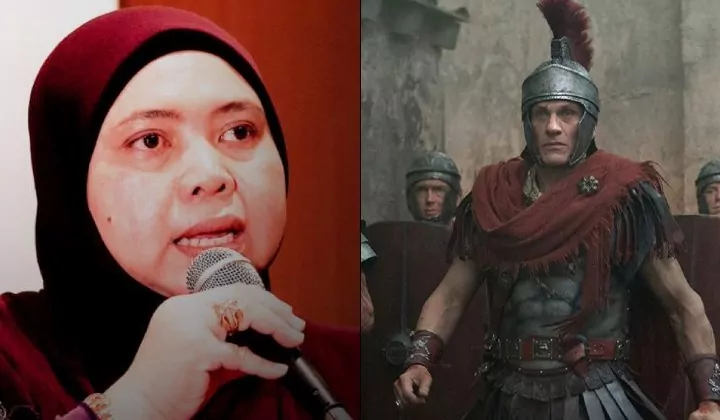
Common sense triumphs over academic theories
By YS Chan
31 minutes ago

ON Dec 31, 2022, Prof Dr Solehah Yaacob, an Arabic language lecturer and professor of linguistic thought from the International Islamic University of Malaysia (IIUM) delivered a lecture at Masjid Gombak Setia. It was recorded in a video which went viral recently and was widely ridiculed by the public.
Higher Education Minister Datuk Seri Zambry Abd Kadir responded by saying that university lecturers should stick to their area of specialisation and not give views on matters out of their scope of expertise. IIUM expressed regret and clarified that the claim was her personal opinion, not the official position of the university.
Instead of remorse, she doubled down on her assertion by issuing a statement last Sunday expounding her theory. I am not an academic and have never studied in any university but I am happy with the little common sense that I have, which can be rare today, even among those with high academic qualifications.
Who were the Romans and Malays, and what spoken or written languages were used by the Malays to teach and Romans to learn? Did mere observation count?
About 2,052 years ago from 27 BC, the Romans were a considerable force for five centuries until they fell in AD 476. These two dates marked the rise and fall of the Roman Empire. They conquered many territories surrounding the Mediterranean Sea, went as far north as England, and east to Mesopotamia (Iraq).
During the Roman Empire, several Indian civilisations flourished in Southeast Asia as evidenced by significant archaeological findings of Hindu and Buddhist temples, sculptures and artifacts; and inscriptions in Sanskrit and Pali. One of the earliest known was the Funan Kingdom covering parts of Thailand, Cambodia and Vietnam.
Nevertheless, the earliest discovered civilization in Malaysia was at the Sungai Batu archaeological site in Kedah, part of the larger Bujang Valley complex, with evidence dating back to at least 788 BC. There, the oldest remaining structure is a clay brick monument, known as Candi 11, which was built around 110 AD.
During the Roman Empire and the ancient kingdoms of Kedah, the inhabitants in the peninsula were very different from the Malays of today. They were Hindus, Buddhists or practised animism. Islam was founded 500 years later and spread by Arab traders initially, and later also by others such as Indian and Chinese missionaries.
Lest we forget, Malay is not necessarily a race or ethnicity. According to Article 160 of the Malaysian Constitution, a Malay is someone who professes Islam, habitually speaks the Malay language, and conforms to Malay customs. Naturally, Solehah wishes to define or interpret certain things differently to fit her agenda.
I was a tourist guide half a century ago and took great pride in showing foreigners where boats were built in Pulau Duyong, 13km from Kuala Terengganu. They were made from chengal wood and renowned for their craftsmanship, but business has declined to the extent there had been no new orders for several years.
During my secondary school years in the 1960s, I frequently cycled to the Port Klang jetty from my new village just to watch cargo ships berthed alongside the wharf or midstream, and port workers or islanders would travel a short distance by sampans from the jetty to reach the ferries.
The arrangement was to protect the livelihood of the sampan rowers but later, ferries were allowed to berth and passengers could embark and disembark directly from the boats to the jetty. Occasionally, I fished at the cargo jetties on the right side of the passenger jetty. Farther to the right was where sampans were built.
In recent decades, I could not see a single one. These giant rowing boats that could seat many passengers are a sight to behold. How I wish at least one is preserved by a museum or local authority. I would be happy to travel a long distance just to view nostalgia.
However, I am not bothered to travel all the way to watch a great wall or giant pyramid, which were built at the cost of many human lives. I am not moved by claims of past glories, regardless whether they are facts or fictions.
Only what happened since the end of the last world war in 1945 have a great impact on us now and the future.
Communities boasting about their past, real or imaginary, would continue to be backward. Those looking at the future would focus more on science, technology, engineering and mathematics (STEM) for studies, research and industry. It requires hard thinking, but many prefer to memorise or believe without questioning or challenging.
Finally, if the Romans could sail to Southeast Asia, why would they need to learn about ship-building from the locals? If humans could land on Mars one day, would the taikonauts learn about spaceship building from the Martians? ‒ Nov 10, 2025
YS Chan is master trainer for Mesra Malaysia and Travel and Tours Enhancement Course and an Asean Tourism Master Trainer. He is also a tourism and transport business consultant.
Common Sense tells you that only women get pregnant. But British Bullshit Corp has none of that.
ReplyDeleteIn June, a BBC teleprompter instructed presenter, Martine Croxall, to say ‘pregnant people’.
She, bravely, corrected this term by saying ‘women’.
Now she has been disciplined and suspended she should have been PROMOTED and Congratulated.
Shame on the BBC!
https://x.com/benonwine/status/1987093056584359956?s=46
A year ago Jewish staff complained about antisemitism at the BBC and were completely ignored. Removing two people won’t solve that problem.
ReplyDeleteWhat are they going to do about this?
See here report from Daily Mail.
https://x.com/heidibachram/status/1987871615699353641?s=46
Heidi Bachram 🎗️
Delete@HeidiBachram
My husband
@adammaanit
’s relatives were murdered and taken hostage by Hamas terrorists.https://heidibachram.substack.com
a biased source wakakaka